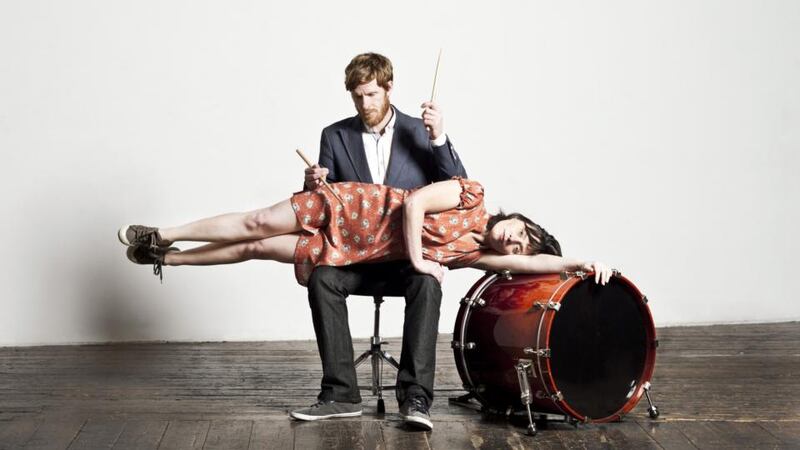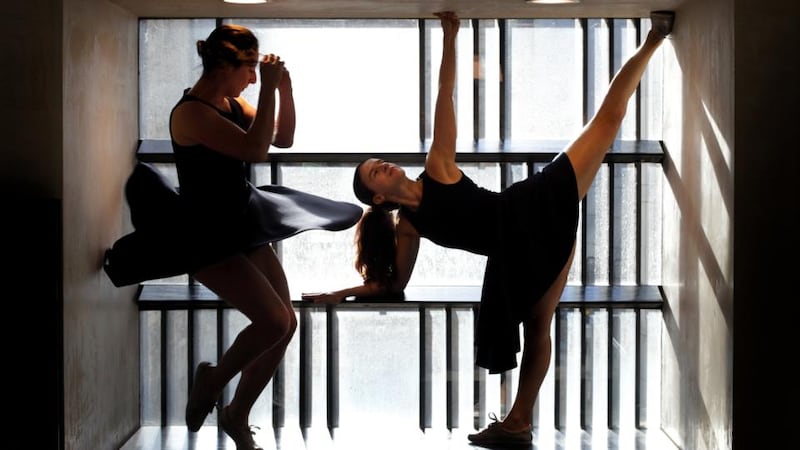For once, a glint of light in the tunnel of recession is not from the blade of an approaching axe but a welcome flash of optimistic endeavour. A new venture, Dublin Dances into Spring, will see three contemporary dance companies – Irish Modern Dance Theatre, Liz Roche Dance Company and CoisCéim Dance Theatre – band together to present three world premieres, starting next week.
"The environment we live in right now means less money," says Bridget Webster of CoisCéim. "But we looked on this as an opportunity. We thought, Here we are, all doing shows in the next few months, so why not work together?"
As Liz Roche says, “We would have been open to interacting with one another, but now it’s a bit of needs must, too.”


"We realised also that the small scale of the dance world in Ireland was not a drawback, as familiarity is a benefit," says John Scott. "We all know and respect each other very well."
Partnering in dance is natural and instinctive; the art form is inherently open to artistic collaboration, and many visual artists, composers, musicians, actors and dramaturges have woven their skills into contemporary dance. The current level of co-operation in Irish dance is crucial for the creation and showing of new work.
One challenge for this kind of work is the fear that identities will become blurred. “Dance isn’t just one thing; it is so amazingly diverse. Here you have three distinctive contemporary companies all working quite differently,” says Scott. Or, as Webster puts it, “We all have individual creative identities.”
In this new partnership, "clarity is fundamental", says Ray Yeates, arts officer with Dublin City Council, which is supporting the programme. "Thinking about the project is as important as funding it. We have to be clear about what we want from this and how we can achieve it. My agenda, if you like, is to increase access and new audiences in the city, so I needed to see what the three companies might bring to this."
To this end, the companies involved will receive the second half of their funding when “the box-office receipts are in”.
Merce Cunningham collaboration
John Scott's triple bill Actions will launch the programme on Tuesday. He says his collaborations have a local and international dimension. The premiere of his work The Big Message introduces a rising French dancer to Irish audiences, and he is equally enthusiastic about his collaboration with the Merce Cunningham Trust, in New York, which was founded to conserve and promote the work of the late US choreographer.
"This is just the beginning," says Scott. Totem Ancestor, a short solo once danced by Cunningham, with a score by John Cage, will receive its Irish premiere at the Peacock Theatre (another alliance), performed by Ashley Chen, one of Cunningham's former dancers, who has also appeared in several Irish Modern Dance Theatre works.
Creating an artistic relationship with theatres and other cultural institutions is also part of CoisCéim's connectivity in these Dublin Dances into Spring moves. February sees a mini-residency at the National Gallery of Ireland, with CoisCéim's artistic director, David Bolger, taking on a series of lunchtime performances with Dance Talking: Portraits of a Dance, based around the gallery's collection.
In March a collaboration with Project Arts Centre will culminate in Agnes, a new dance-theatre piece inspired by the life and work of the late Agnes Bernelle, the theatre's former creative director and frequent performer. A one-time spy, interpreter of Kurt Weill, actor and writer, Bernelle knew well how many lives can be lived at the one time. Bolger has yet another partnership on the go through a company residency at St Patrick's College in Dublin.
"These residencies and emerging university links all over the country are becoming a great resource," says Roche, whose company spent three years associated with the Irish World Academy of Music and Dance, at the University of Limerick.
"When we present our new work Interloper in Galway next month, Ríonach Ní Néill's residency there will add double value to our performance. She will host a postshow interview, but her overall presence is expanding the local audience for dance, and that's got to be good for all of us."
For Ní Néill, a further layer of collaboration has been under way with NUI Galway. “I think that new pathways are being created between the arts and academia, and involving dance in this mix is maybe freeing up another perspective on how we think.”
Ecology of connections
You'll now find dancer-in-residence schemes from Carlow to Galway and from Navan to Birr. Fearghus Ó Conchúir, curator of Cork's Firkin Crane centre for dance, says these dancers are "becoming crucial to our cultivation of an ecology of connections".
The centre's opening show for 2014 consists of two new duets with Liv O'Donoghue, Ten and With Raised Arms. O'Donoghue completed a stint at DanceHouse, in Dublin, to create the new work, and finessed the piece during a production residency at Firkin Crane.
This dancing version of lateral thinking is no coincidence. "The integrated dance policy from the Arts Council made a difference," says Paul Johnson, chief executive of Dance Ireland and, until recently, a member of the Arts Council's board. "I think that the challenge is to continue connecting, nationally, say, with the fledgling Dance Limerick or with Belfast's Dance Resource Base."
Equally important, he says, is the creation of international partnerships. He cites the establishment 10 years ago of Dublin Dance Festival, which has brought international dance here and put new Irish work centre stage through its Representing Ireland strand.
One Irish company that has made leaps on to the world stage is Fabulous Beast. Although its artistic director, Michael Keegan-Dolan, maintains his base in Longford, his coproductions have included partnerships with Sadler’s Wells, English National Opera and the Barbican, in London.
So with passion, confidence and consensus abounding, are there any risks in developing all these partnerships, in adding to what Rionach Ní Néill describes as “a whole constellation of connections”?
Webster and Yeates take a pragmatic approach, with both cautioning against “creating models that are too cumbersome or unwieldy and simply won’t work”. An enthusiastic if realistic John Scott takes the long view. “We are all about surviving,” he says, “so the only risk, I think, is in not working together and using our imaginations.”
Dublin Dances into Spring starts today and runs until March 22nd; dublindances intospring.com

















